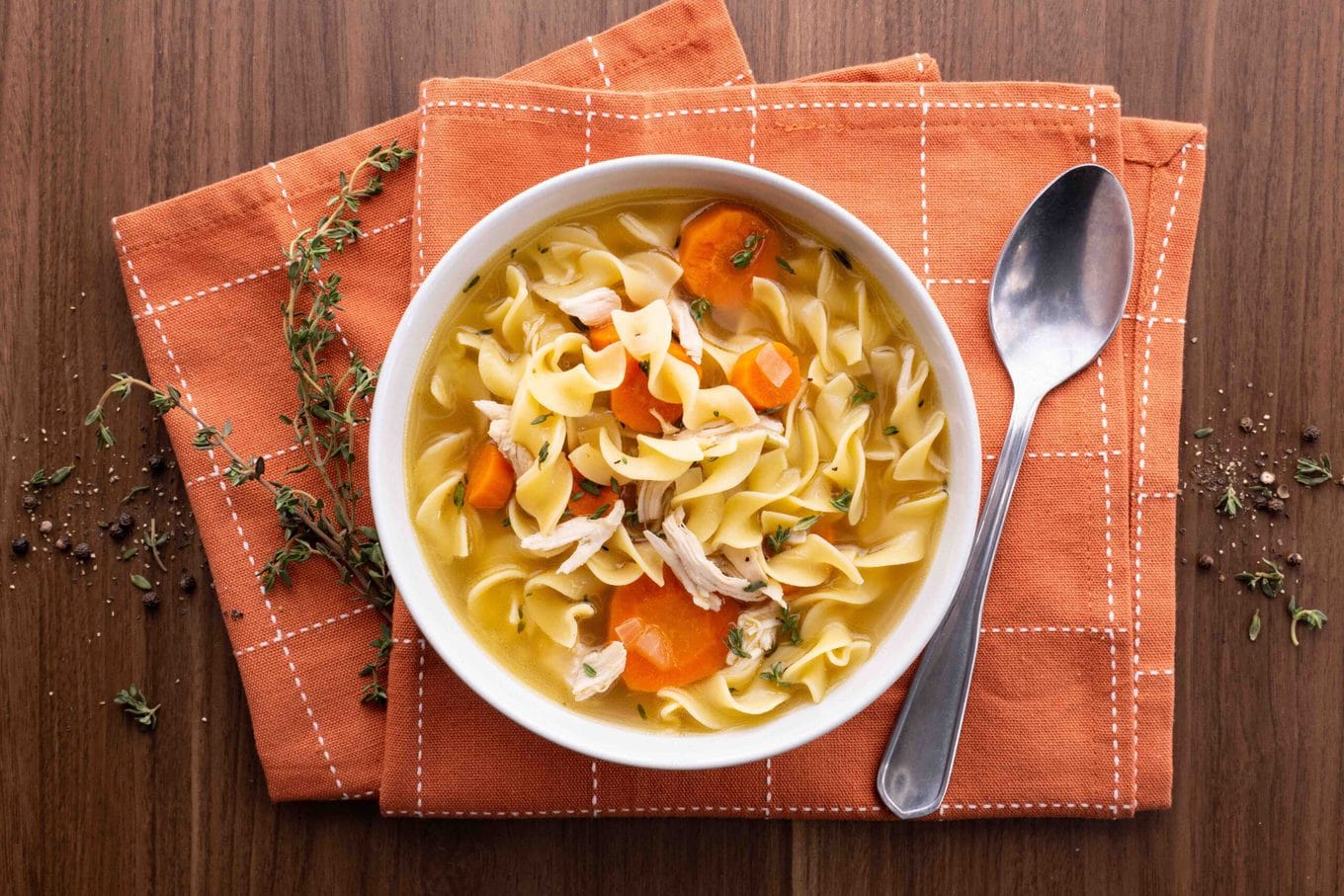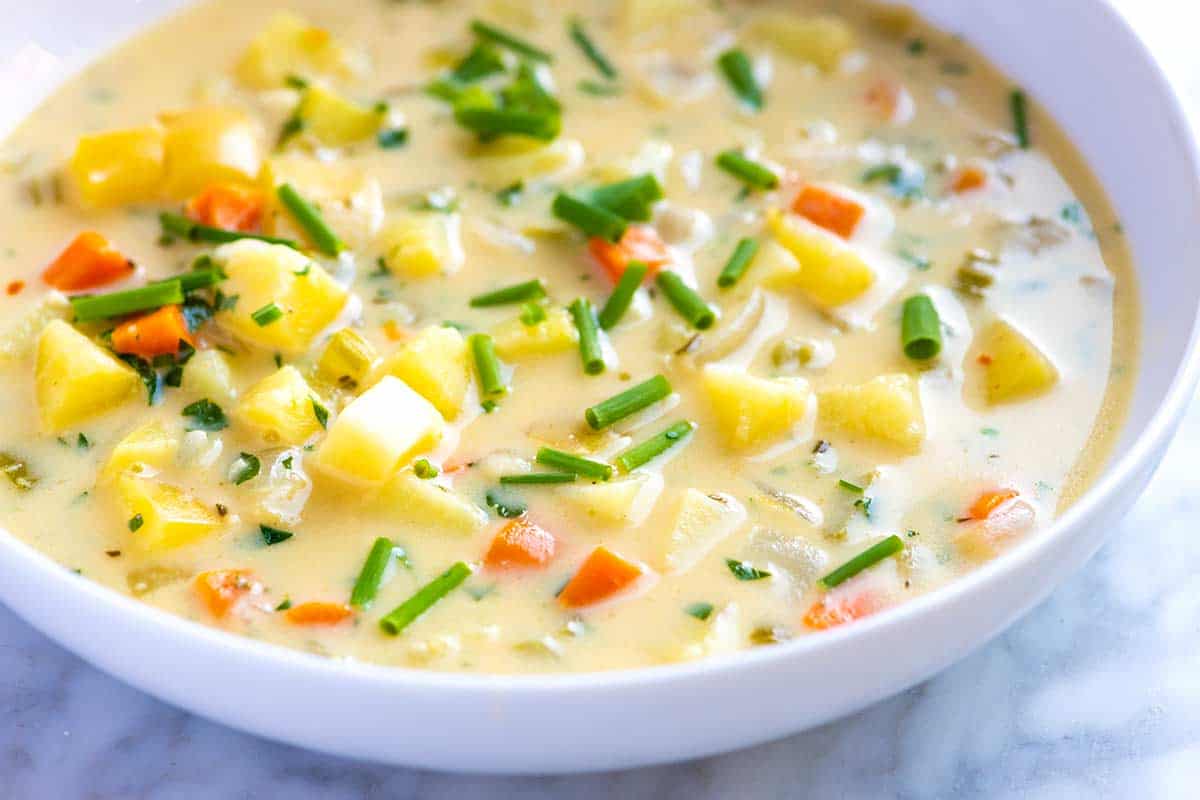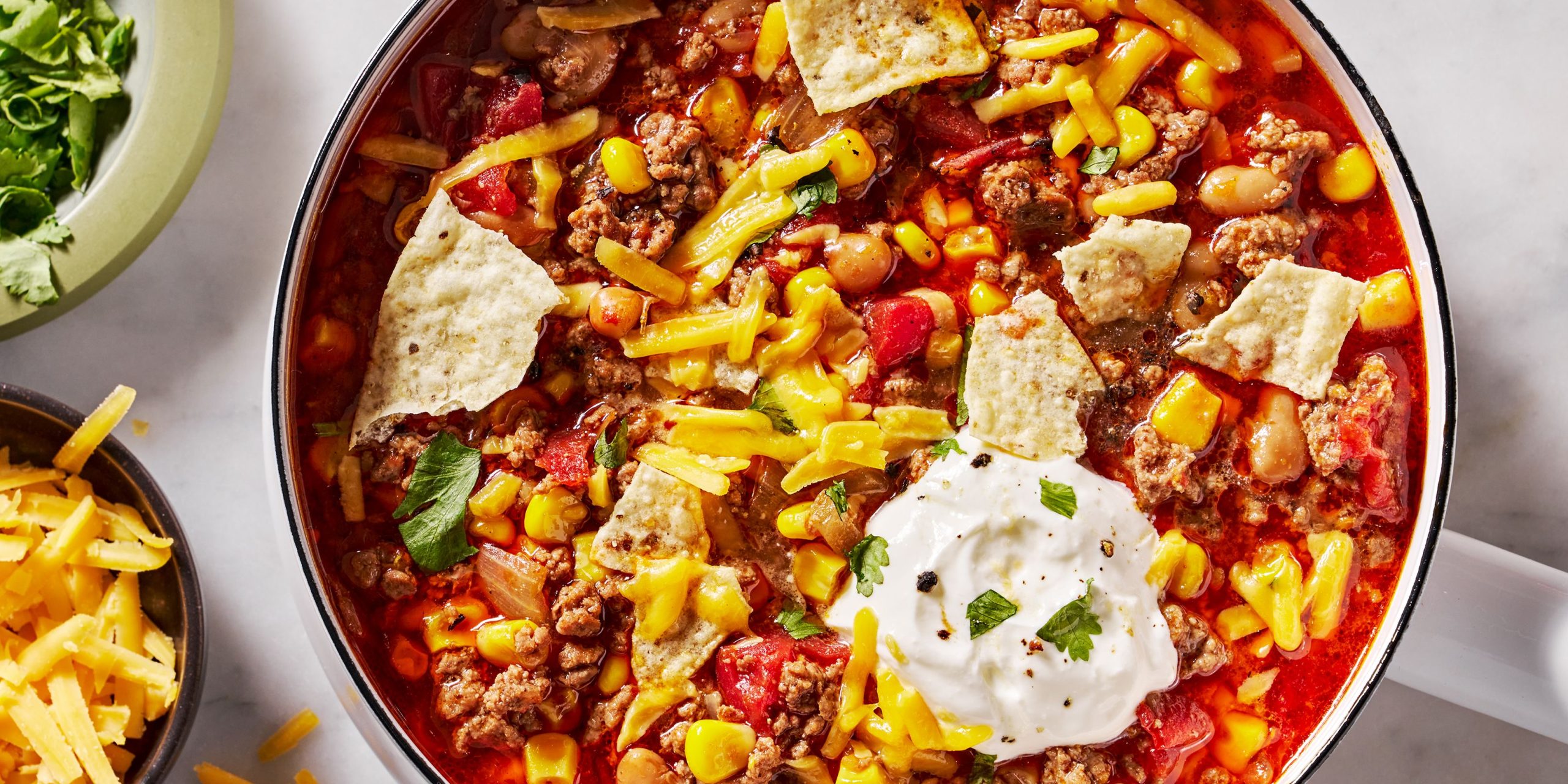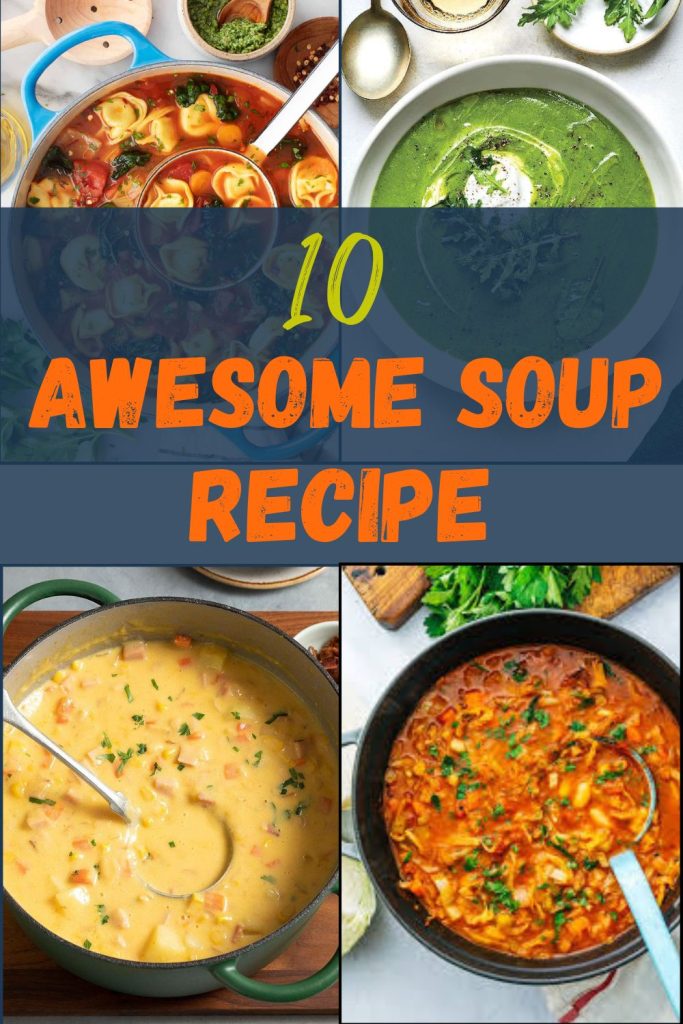Soup is the epitome of comfort food, perfect for all seasons. It can be a hearty winter warmer or a refreshing summer meal, making it a staple in many culinary traditions around the world. This collection of 10 awesome soup recipes offers a wide range of flavors and ingredients to suit any palate. Each recipe includes a detailed cooking method and a list of fresh ingredients, ensuring that even novice cooks can produce satisfying results.
The versatility of soup is unparalleled, with options ranging from rich and creamy to light and brothy. These recipes showcase a variety of techniques and flavors, from the rustic simplicity of a chunky vegetable soup to the refined elegance of a smooth pureed bisque. Ingredients are chosen to enhance the natural essence of the main components, whether it’s a robust meat-based stock or a delicate vegetable broth.
Understanding the foundations of a great soup is crucial, and these recipes provide insight into achieving the perfect balance of texture and taste. They guide cooks through each step, from sautéing aromatics to the final garnish, demonstrating how to layer flavors for maximum impact. This approach ensures that the resulting soups are not just nourishing but also a delight to the senses.
Essential Soup Basics
Creating a delicious soup relies on understanding the foundation of soup making, selecting quality ingredients, and mastering various cooking techniques to bring out the full flavors.
Soup Selections: A Variety of Comforting Choices
When the weather turns chilly, people often look for comfort in a bowl of hot soup. The range of soups available caters to diverse tastes, featuring both timeless classics and modern favorites. Here are some popular options:
Classic Chicken Noodle: A perennial favorite known for its soothing properties

Broccoli and Cheese Soup: A creamy blend appealing to both children and adults
Hearty Chicken and White Bean Soup: Full of protein and fiber for a nutritious meal
Chicken Tortilla Soup: Prepared in a slow cooker for enhanced flavors
Creamy Potato Soup: Rich and satisfying, perfect for cold days

Italian Minestrone: A vegetable-packed option for those seeking lighter fare
Roasted Tomato Basil: A simple yet elegant choice with a hint of freshness
Chicken and Corn Chowder: A crockpot dish that combines sweetness of corn with hearty chicken
Taco-flavored Soup: Another crockpot creation that brings a Mexican twist to the table

Pasta E Fagioli: Taking inspiration from Olive Garden, a pasta and bean soup with Italian seasonings
For individuals interested in budget-friendly meal ideas and couponing, there are invaluable tips and strategies available that can help with saving money while still enjoying these delicious soups.
Soup Foundations
The base of any flavorful soup is its stock. A well-prepared stock, whether it is vegetable, chicken, beef, or seafood, provides the necessary depth and richness. Homemade stock tends to have a fresher, fuller taste compared to store-bought versions. When preparing stock, one should simmer bones or vegetables with herbs to extract the maximum flavor.
Selecting Ingredients
Fresh, high-quality ingredients are the cornerstone of a good soup. Veggies should be seasonally sourced for peak flavor and nutrients. When selecting herbs, fresh is preferable, but dried can be used for convenience. A balance between the different flavor profiles – sweet, umami, bitter, sour, and salty – is what makes a soup truly stand out.
Cooking Techniques
There are a variety of cooking techniques crucial to soup-making:
- Sautéing: Begins with onions, garlic, or other aromatics to build a flavor foundation.
- Simmering: Allows the flavors to meld together over low heat without boiling, which can cause the ingredients, particularly the veggies, to break down too much.
- Blending: For smooth soups, blending part or all of the ingredients can create a velvety texture.
- Seasoning: Adding salt during the early stages, along with other spices and herbs towards the end, ensures a well-seasoned and aromatic soup.
Using these basics, cooks can prepare a wide array of homemade soups that are both flavorful and nourishing.
Popular Soup Styles
Soup can be categorized by its base and primary ingredients which influence their texture, flavor, and heartiness. Whether creamy and rich with dairy, packed with meat and beans, or filled with fresh vegetables and vegan-friendly options, there’s a style to satisfy every preference.
Creamy and Dairy-Based Soups
Creamy soups offer a rich texture often achieved through the addition of dairy products like milk, cream, or cheese. Chowder is a prime example, typically thickened with dairy and occasionally enriched with bacon for a smoky depth. Cream of mushroom soup highlights dairy’s ability to complement earthy ingredients, while butternut squash soup employs cream to balance the vegetable’s inherent sweetness.
- Key Ingredients:
- Dairy: Milk, Cream, Cheese
- Vegetables: Mushrooms, Squash
- Garnish: Chives, Bacon Bits
Hearty Meat and Bean Soups
Meat and bean soups are the go-to for a filling and protein-rich meal. Lentil soup is a staple, featuring lentils paired with a variety of meats or kept vegetarian while still offering a dense nutritional profile. For those seeking a heartier dish, soups with chunks of meat, often beef or chicken, along with a mix of beans can provide a comforting and satisfying option.
- Protein Sources:
- Meat: Beef, Chicken, Bacon
- Beans: Lentils, Kidney Beans, Chickpeas
Vegetable-Forward and Vegan Options
A focus on vegetables can result in a lighter soup that is often also suitable for vegan diets. Vegan soup variations might include tomato soup, enriched with herbs and spices, or blended soups like french onion, which brings a sweet caramelized flavor profile. Coconut milk serves as an excellent dairy substitute, providing a creamy consistency without the use of animal products.
- Vegetable Examples:
- Tomato Soup
- French Onion Soup
- Vegan Substitutes:
- Coconut Milk instead of Dairy
Global Soup Inspirations
The variety of soups from around the world offers a vast array of flavors and ingredients. Each region imbues its traditions and palate into these comforting dishes, from aromatic Asian broths to hearty American stews.
Asian Influences
In Asia, soup is a staple, often incorporating complex flavors and fresh ingredients. Miso Soup is a Japanese classic created with a stock called dashi, miso paste, and often includes tofu and seaweed. It is a delicate yet flavorful soup that exemplifies the subtlety of Japanese cuisine. Another renowned Asian soup is Noodle Soup, prevalent in many cultures from ramen in Japan to the pho of Vietnam, each featuring unique spices, types of noodles, and accompaniments like fresh herbs, meats, and vegetables.
| Asian Soup | Characteristic Ingredients |
|---|---|
| Miso Soup | Dashi, miso paste, tofu, seaweed |
| Noodle Soup | Varies: can include rice noodles, wheat noodles, herbs, meats, and vegetables |
Traditional European Soups
European soups have a rich history and are often tied to local ingredients and climate. French Onion Soup epitomizes this with its caramelized onions, beef stock, and gratinated cheese topping, offering warmth and depth of flavor. The Mediterranean brings us Gazpacho, a Spanish cold soup that’s perfect for hot summers, typically made from ripe tomatoes, cucumbers, bell peppers, onions, and seasoned with garlic, olive oil, and vinegar. Italian Wedding Soup is a celebration of Italian flavors, combining green vegetables, meatballs, and often acini di pepe pasta in a clear chicken broth.
| Ingredients | |
|---|---|
| French Onion Soup | Onions, beef stock, cheese, baguette |
| Gazpacho | Tomatoes, cucumbers, bell peppers, onions, olive oil |
| Italian Wedding Soup | Green vegetables, meatballs, chicken broth, pasta |
American Classics
American soups tell stories of local customs and resources. New England Clam Chowder, for instance, is a creamy comfort food with clams, potatoes, salt pork, and onions – a legacy of the East Coast’s seafood abundance. On the other hand, Mulligatawny Soup reflects the fusion of American innovation with international influence, primarily from Indian cuisine, typically incorporating chicken, curry spices, apples, and rice or cream.
- New England Clam Chowder: A thick, savory soup often accompanied by oyster crackers.
- Mulligatawny Soup: A flavorful blend of chicken, vegetable, curry, and cream, symbolizing a meld of cultures.
Cooking and Serving Techniques
When crafting soup, the cooking vessel can heavily influence both texture and flavor. A slow-cooker is ideal for rich, deeply flavored stews, as it allows ingredients to simmer and meld over several hours. Alternatively, an Instant Pot is superb for time-saving purposes, achieving the slow-cooked taste in a fraction of the time.
Utilizing a Dutch oven is another commendable method. Its heavy construction and even heat distribution are perfect for concocting soups that require browning or sautéing as foundational steps. Each cuisine has its preferred method; for instance, a Dutch oven is often a favorite in French cooking.
When serving, attention to detail can elevate the experience. Garnishes should be chosen to complement the soup’s flavor profile and add a contrasting texture. Fresh herbs, a dollop of cream, croutons, or a sprinkle of spices can all serve as the perfect finishing touch.
| Cuisine | Cooking Method | Garnish Suggestions |
|---|---|---|
| French | Dutch Oven | Fresh Thyme |
| American | Slow-Cooker | Crispy Bacon Bits |
| Asian | Instant Pot | Cilantro |
One should always consider the temperature and method of serving. Porcelain or stoneware bowls retain heat well for hot soups whereas chilled bowls are perfect for serving cooler varieties. Remember, quality ladles and soup spoons provide convenience and complement the overall dining experience.




